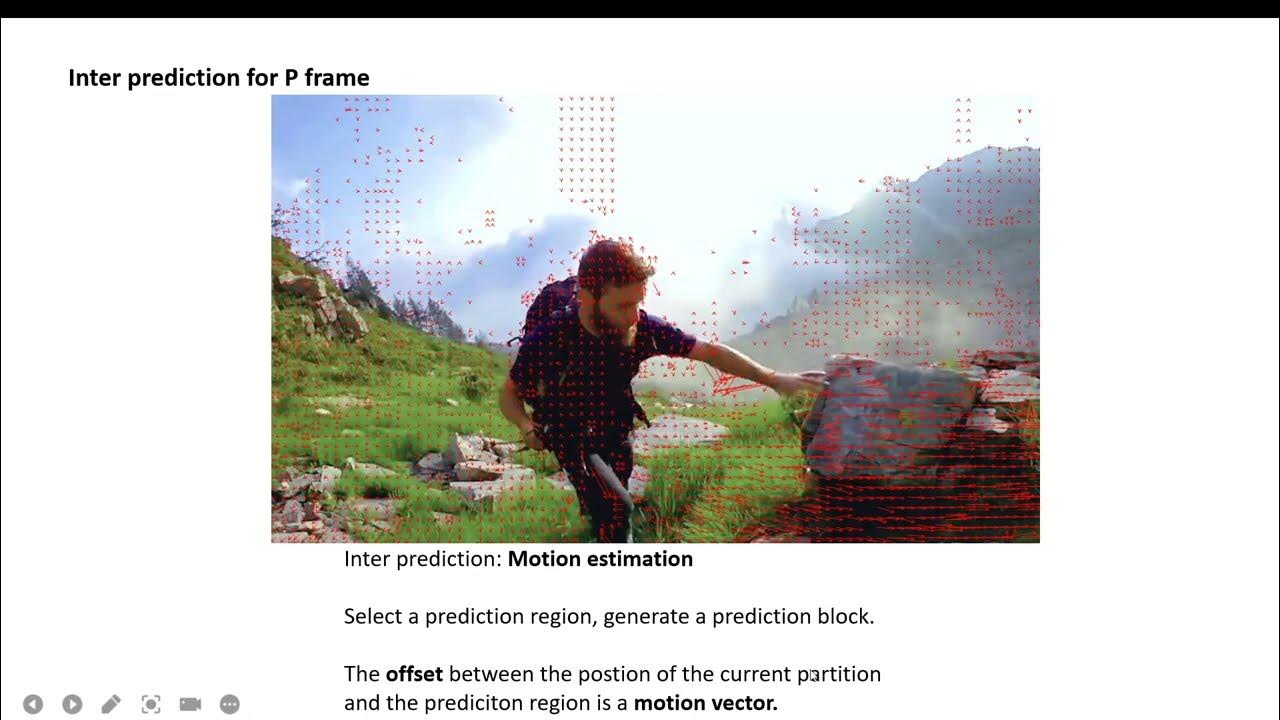Algoritma Teknik Kompresi Run Length Encode (RLE) dan Implementasinya dengan Python
Summary
TLDRThis video tutorial explains the concept of data compression, focusing on Run-Length Encoding (RLE) and its implementation in Python. The presenter, Dini, introduces data compression as a process of reducing file sizes for efficient storage and transmission, covering both lossless and lossy techniques. RLE, a lossless compression algorithm, is demonstrated with examples, showing how it compresses repetitive text into a more compact form. The video walks through the coding process to implement RLE in Python, explaining key functions for compression and decompression, and includes practical steps for using Paytren to handle file compression effectively.
Takeaways
- 😀 Compression is the process of converting a set of data into a code to save space or transmit data more efficiently.
- 😀 There are two types of data compression techniques: lossless and lossy.
- 😀 Lossless compression retains all the original data, allowing for full restoration of the original file, though it simplifies the data.
- 😀 Lossy compression removes some data from the original file to reduce its size, potentially altering the quality of multimedia files such as images.
- 😀 The Run-Length Encoding (RLE) algorithm is a lossless compression method that simplifies data by representing consecutive repeating elements as a single data value and count.
- 😀 RLE is best suited for data with a high level of homogeneity or repeating patterns, such as strings of the same character.
- 😀 A practical example of RLE compression: in a text where a letter 'D' appears repeatedly, RLE can compress it into '1D' (1 occurrence of D).
- 😀 RLE compression is efficient for repetitive data like long strings of the same character (e.g., 'DDDDDDDD' becomes '8D').
- 😀 The Python implementation of RLE involves reading a file, checking for repeating characters, and compressing them into a simpler form.
- 😀 Python code allows users to choose between compression and decompression by entering a selection number, making the process interactive for the user.
Q & A
What is data compression?
-Data compression is the process of transforming a set of data into a more compact format to save storage space or reduce the time required to transmit it.
What are the two main types of data compression?
-The two main types of data compression are lossless and lossy compression. Lossless compression retains all original data, allowing perfect reconstruction, while lossy compression sacrifices some data for higher compression ratios.
How does lossless compression work?
-Lossless compression reduces file size without losing any data, meaning the original file can be fully restored after decompression. The data is simplified rather than removed, which preserves its integrity.
What is the difference between lossless and lossy compression?
-Lossless compression maintains all the original data and allows for perfect recovery, while lossy compression eliminates some data to achieve higher compression, potentially making the decompressed data different from the original.
What is Run-Length Encoding (RLE)?
-Run-Length Encoding (RLE) is a simple lossless compression algorithm that works by replacing sequences of the same data element with the count and the element itself, like turning 'AAAA' into '4A'.
When is RLE most effective?
-RLE is most effective when there are long sequences of repeated data, such as when a character or value appears consecutively multiple times in a dataset, making the compression more efficient.
What is a typical application of RLE?
-RLE is commonly used in applications like compressing simple text files, bitmap images, and other data types where repeated values or characters are abundant, such as in certain image formats like TIFF and BMP.
How does the Python code for RLE compression work?
-The Python code for RLE compression reads a file, identifies sequences of repeated characters, and converts these sequences into a compressed format by storing the count of each character followed by the character itself.
What happens during the decompression process in RLE?
-During decompression, the program reconstructs the original data by repeating each character the number of times specified in the compressed format. This process restores the original sequence from the compressed data.
How does the user interact with the Python RLE program?
-The user interacts with the program by choosing whether to compress or decompress a file. The program prompts for input and performs the corresponding operation based on the user’s selection, either compressing or decompressing the text data.
Outlines

Dieser Bereich ist nur für Premium-Benutzer verfügbar. Bitte führen Sie ein Upgrade durch, um auf diesen Abschnitt zuzugreifen.
Upgrade durchführenMindmap

Dieser Bereich ist nur für Premium-Benutzer verfügbar. Bitte führen Sie ein Upgrade durch, um auf diesen Abschnitt zuzugreifen.
Upgrade durchführenKeywords

Dieser Bereich ist nur für Premium-Benutzer verfügbar. Bitte führen Sie ein Upgrade durch, um auf diesen Abschnitt zuzugreifen.
Upgrade durchführenHighlights

Dieser Bereich ist nur für Premium-Benutzer verfügbar. Bitte führen Sie ein Upgrade durch, um auf diesen Abschnitt zuzugreifen.
Upgrade durchführenTranscripts

Dieser Bereich ist nur für Premium-Benutzer verfügbar. Bitte führen Sie ein Upgrade durch, um auf diesen Abschnitt zuzugreifen.
Upgrade durchführenWeitere ähnliche Videos ansehen

Data Compression

Compression: Crash Course Computer Science #21

47. OCR A Level (H446) SLR9 - 1.3 Run length & dictionary coding

What is Digital Information - Python

Process of H.264 encoding -- intra inter prediction, macroblock, frame type...

Konsep Dasar Batang Tekan & Euler Buckling Load | Struktur Baja | Lightboard
5.0 / 5 (0 votes)
